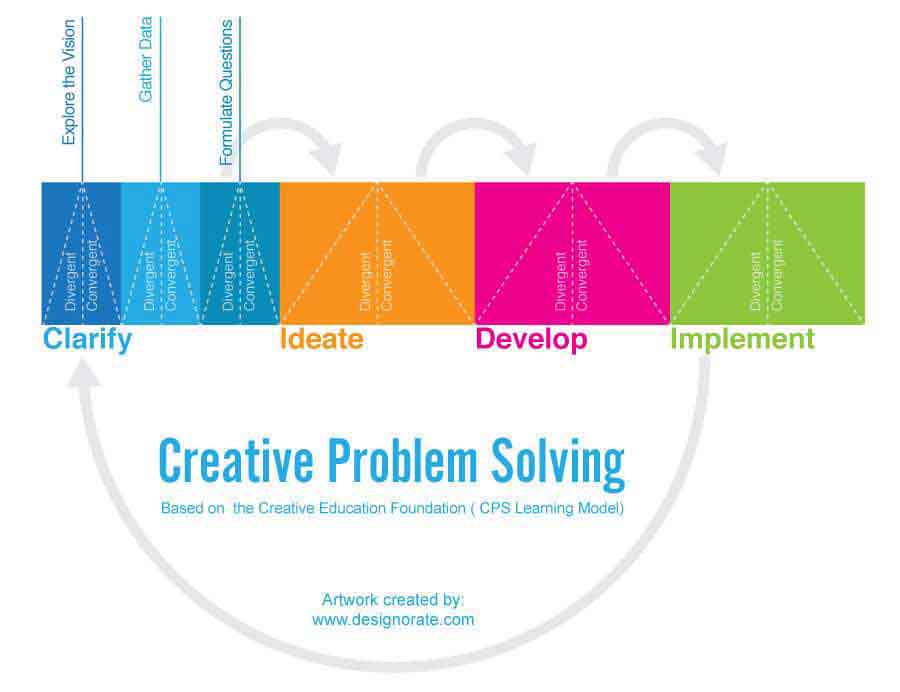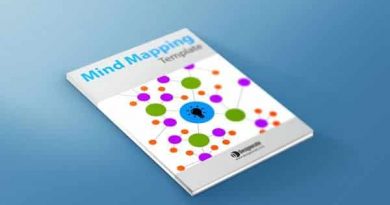Creative Problem Solving: How to Turn Challenges into Opportunities
What if we can turn problems faced in projects into opportunities? There are various examples show that understanding the problem and provide a creative solution for it can lead to successful products such as the Apple iPods and e-book readers. These products have implemented the Creative Problem Solving approach to see their consumers’ needs as an opportunity for new products.
When we face a problem inside the company or the market, we tend to place all the effort and resources to only solving it. This is totally normal as it reflects the nature of the human being when facing a threat or a challenge. However, this problem may also present an opportunity. For example, Airbnb was able to find an opportunity in the market by solving people problem to find affordable living places for a short term during their trips. The creative problem solving can help companies to explore both the solutions and opportunities related to the problem.
Related articles:
- Problem-Solving Using Cause and Effect Diagram
- Practice Guide to Solve Problems with TRIZ
- A Guide to the SCAMPER Technique for Creative Thinking
- What Does the Systems Thinking Teach us About the Problems of Problem-Solving Practice
What is the Creative Problem Solving?
The creative problem solving (CPS) is a process that is used to solve problems and find opportunities. The process aims to go beyond the traditional thinking in problem-solving to find creative solutions. While there are different problem-solving models, the core difference between them and the creative problem solving is that it applied a divergent and convergent thinking at each stage. The divergent part aims to collect data and explore ideas when the convergent part aims to evaluate and test these ideas.
The idea behind creative problem solving was there for more than 60 years.There were different suggestions to the stages of the creative problem solving, yet all meet with the process introduced by Osbon and Parnes, the founder of the Creative Education Foundation. Other models were also inspired from Osbon and Parnes such as the CPS Learners’ Model, which is developed by Dr. Gerard J. Puccio, Marie Mance, and co-workers.

Generally, the principles behind the creative problem-solving process include the following:
- Separate both the divergent and convergent thinking in each stage. This helps to clearly define the two types of thinking during the meetings and ensure the balance between them. The divergent thinking aims to collect ideas without any judgment regardless their quality. The convergent thinking aims to analyze the ideas, compare it with the objectives, and improve it.
- Avoid judgment during the brainstorming and analyzing the ideas. This helps the team to explore different related ideas and inspire from each others’ ideas. The judgment stage is deferred to the convergent thinking stage to evaluate the process.
- Highlight the problems in a form of questions. These questions are using during the different stages as challenges in order to find solutions
When to Use the Creative problem Solving?
As mentioned earlier, the creative problem solving can be used in two main situations:
- Finding solutions for problems. The product or the company face a problem, all the stakeholder involved in the development process meet and go through the creative problem solving different stages in order to find a viable solution for their problem
- Exploring opportunities. Companies are in a rat race to compete in the market, yet this can’t be achieved without evolving their products to meet the customers’ needs and technology trends.
How to Use the Creative Problem Solving process?
As mentioned earlier, the creative problem solving evolved through the years with different models. Generally, the below CPS Learning Model by the Creative Education Foundation provides an easy to follow a model that includes four main stages; Clarify, Ideate, Develop, and Implement. It is very similar to the design thinking and the critical thinking models. (click the figure below to see the model in larger size).

Stage 1: Clarify
The Clarify stage aims to understand the problem and formulate it in a form of questions. Therefore, it consists of three part:
Explore the Vision
At the beginning, the team should define the main challenge that needs to be addressed during the problem-solving process. In order to achieve this goal, different tools can be used based on either divergent or convergent thinking. The divergent tools include mind mapping, storytelling, storyboarding, collage, and visualization. The convergent tools include the 3 ”I”s and Post & Cluster.
Gather Data
Once the problem or the challenge is defined, the team start to use research methods to collect information and present it to the stakeholders during the divergent part of the session in a form of empathy map, mind maps, storyboard, and storytelling. In order to converge the ideas, the team can use tools such as the 3 “I”s.
Formulate Questions
After understanding the problem, the team formulates their understanding in a form of questions that highlighted the problems or the challenges that need to be addressed.
Stage 2: Ideate
This stage aims to explore different ideas that may qualify to be a solution for the problem. The ideas here are based on the questions that were developed in the first stage. The divergent tools in this stage include mind mapping, SCAMPER, Visualization, and Pictures as Metaphors. The convergent methods include 3 “I”s and Post & Cluster.
Stage 3: Develop
In this stage, the ideas are formed as a solution for the problem, product, or service and prepared to be evaluated. The divergent tools here are very similar to the previous stage, yet the convergent tools include more evaluation tools in order to decide the most convenient tools to use and implement. These tools include the Evaluation Matrix, How-How Diagram, and Visualization.
Stage 4: Implement
This stage includes turning the selected idea into viable solutions in a form of an action plan. This action plan involved all the stakeholders associated with the problem. Also, it includes details of the implementation such as the task assignments, timeline, and budget.
Very similar to the different critical thinking and design thinking process. The creative problem solving is an iterative process where the feedback is collected after the implementation process in order to evaluate the solution and its impact. In order to find more details, the CPS learning Model toolkit provides full information about each stage, the used tools, and extended resources.
The creative problem-solving process helps us to escape the traditional thinking about problems through implementing critical thinking techniques. The process helps us to clearly define the problem in order to avoid any misunderstanding to the situation in hand. Also, it extends the chance to reach creative ideas through the implementation of divergent and convergent thinking.







Nice article Rafiq
Thanks Papisetty!